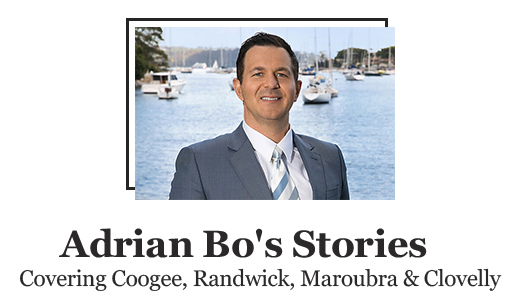Randwick Town Hall
Adrian tells the story of one of the most iconic buildings in Randwick as well as it’s role in the local Artist community.
Welcome, Adrian Bo here from Ray White Park Coast Eastern Suburbs and today I’m outside one of the most iconic buildings in the East to talk about some of the things that have happened here over the last 140 years. Firstly a great new initiative from RCC was instigated recently. There are some fantastic artists in the Eastern suburbs of Sydney, yet affordable options to display and sell their work would be limited. COVID has seriously impacted the use of the Town Hall for creative purposes. In fact only seven exhibitions and events have been run since 2019, so it was resolved to offer a discounted hire fee and instal an art wall hanging system to facilitate and encourage artists to display and sell their work. Of course there are some fantastic art galleries locally, like the Kris Ancog Gallery on Alison Road, Randwick, the Beach & Surf Gallery on Avoca Street, Randwick, the Josef Lebovic Gallery on Anzac Parade in Kensington, Gallery East on Burnie Street in Clovelly, Winkel Galleries on Clovelly Road in Clovelly, amongst many others, but the opportunity to make the work of local artists more accessible is to be applauded. Now the iconic Randwick Town Hall, which I’m down the road from at the moment, has had quite an interesting history.
A local council was originally formed to look after the Randwick area in 1859 when Simeon Pearce was elected the first LM. At that stage they would meet at the Randwick Destitute Children’s Asylum which eventually became part of the Prince of Wales Hospital. The Borough Chambers were built in 1862 further down from Avoca Street, before becoming the administration offices of St Jude’s Church. The Town Hall behind me was eventually built in 1882 under the leadership of John See, who had built a house called Urara at 2-4 Milford Street, which is now an aged care facility. Sir John See went on to become the first leader of NSW in 1901 after federation. In 1911 a range of meetings were held to discuss relocating the Town Hall, but eventually the 50,000 pound loan that would be required deterred RCC from pursuing this. In 1923 it was proposed that Randwick Public School should have the Town Hall, and a new larger construction should be made befitting of the wealth in the area. However the Great Depression knocked that on the head. In 1938 RCC aimed to acquire a building at 23-25 Cook Street to use as a new Chambers, but this also never eventuated.
In 1930 a great celebrity of the era, Amy Johnson, who flew a plane solo from the UK to Australia, was afforded a lavish official reception here at Town Hall. From the outbreak of the Second World War, RCC recruited thousands of volunteers to help with the civil defence of the municipality. After the war, one of the glass doors of Town Hall was etched with a memorial, A Tribute to the Voluntary Workers of the municipality 1939-1945. In 1952 the first free public library in Randwick was built next to the Town Hall. This was moved to Randwick Shopping Village in 1990. Even as recently as 1964 the relocation of the Town Hall was back on the agenda, with Maroubra Junction as the prime candidate. However yet again the status quo remained, though renovations and additions have been ongoing over the post war years. As ever I feel it’s important to keep the stories of our iconic buildings and people in the spotlight, as there is much to learn from the lessons of history. I’ve sold thousands of properties in the Randwick area over the 34 years I’ve been a real estate agent, recently including 2 at 30 Cowper Street, a 2 bedroom unit I sold for $935,000, 3B at 94 Alison Road, another 2 bedroom unit I sold for $980,000, 1 at 3 George Street, a 2 bedroom I sold for $1,125,000, and if the Town Hall does indeed become a regular host to local art exhibitions it will enhance the role of this stunning community facility. Keep smiling and always remember your home is worth more with Adrian Bo.


